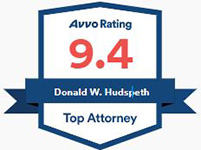- BUSINESS LAW
- Business Law
- Starting a Business in Arizona
- Reasons to Start Your Own Business
- Small Business
- Organizational Engineering
- Arizona C-Corporations & S-Corporations
- Form an LLC in Arizona
- Corporation Shareholder & LLC Operating Agreements
- Partnerships in Arizona
- Buying or Selling a Business in Arizona
- Arizona Representation for Out-of-State Businesses
- CONTRACTS & TRANSACTIONS
- Mergers & Acquisitions
- Commercial Leases
- Construction Law
- Construction Contract Issues
- Church Law
- Entertainment Law
- Health Care Law
- Internet Law
- International Business Law
- Medical Practice
- COMMERCIAL LITIGATION
- Commercial Litigation
- Alternative Dispute Resolution
- Aviation Contract & Lien Disputes
- Appellate Practice
- Breach of Fiduciary Duties
- Breach of Sales, Service & Supply Agreements
- Business Disparagement & Defamation
- Business Purchase Dispute Litigation
- Business Torts
- Federal Court Litigation
- Franchising Litigation
- Fraud & Misrepresentation
- Tortious Interference
- Construction Litigation
- BUSINESS SUCCESSION
- Business Divorce & Disputes
- Dissolutions & Partnership Disputes
- Shareholder Derivative Suits
- Division of Business Assets
- Buy-Sell Agreements
- Protection of Personal Assets
- Asset & Liability Protection
- Asset Protection Trusts
- Wills & Healthcare Directives
- WHITE COLLAR CRIME & REGULATORY
- White-Collar Criminal Defense
- Regulatory Compliance and Enforcement
- Internal Investigations
- INTELLECTUAL PROPERTY
- Intellectual Property
- Copyright Law
- Cybersecurity & Data Breach Laws
- Intellectual Property Infringement
- Trademark Law
- Trade Secrets and Proprietary Information
- EMPLOYMENT AGREEMENTS & ISSUES
- Employment Agreements & Issues
- Breach of Non-Compete Agreements
- Employment & Labor
- Restrictive Covenants
Search Site
Ask about offsite General Counsel services Appointments 365 – 7 days a week
866-696-2033
Corporation Governance: Meetings and Voting
Control of a corporation is exercised through its board of directors. Shareholders in turn elect the directors. In addition to straight voting of one vote per share, there are several methods provided by statute or corporate charter for calculating shareholder votes, including cumulative, class, weighted and supermajority voting.
Cumulative Voting
With straight voting, each share is entitled to one vote per director being elected. Thus, fifty percent plus one of the corporation’s outstanding shares will elect each director. Cumulative voting allows a shareholder to accumulate his or her votes for all directors and to cast those votes for just one or fewer than all of the directors. As a result, the owners of a majority of the shares are likely to elect the majority of the directors but not all of the directors if shareholders in the minority decide to accumulate their votes and cast them for a particular director.
Proponents of cumulative voting suggest that the procedure may result in a more representative board of directors. Opponents of cumulative voting are concerned that directors elected by a minority may seek to protect minority interests at the expense of the interests of the corporation to which the directors owe a fiduciary duty.
One mechanism for counterbalancing the effects of cumulative voting is to stagger the elections of members of the board of directors so that directors have multi-year terms and only some of the directors are elected each year. With cumulative voting, the chance of a minority electing a director increases as the number of directors to be elected increases. With staggered elections, only a half or third (or otherwise, depending on how the elections are staggered) of the directors are elected at any one time and the chance of minority stockholders electing directors is decreased.
Class Voting
To insure particular levels of representation in the voting for directors, shares may be divided into classes with numerous possible variations on the power of each class to vote for directors. For example, each class may be provided with the power to elect one or more directors, or classes could be set up that would vary according to what rights they have to receive dividends or vote for directors.
Weighted Voting
While as a rule, each share of stock is considered to have one vote, provision may be made in corporate charters for the issuance of shares with more or less than one vote when compared to other shares issued by the corporation. A particular state’s corporation law or case law would determine whether it would be permissible to provide for shares with more than one vote each without also requiring a proportionately increased investment in the corporation by the purchaser of such shares.
Supermajority Voting
Charters may contain a provision that approval of certain actions by the corporation must take place through more than a majority of the votes of directors or shareholders. Such a provision would counter the traditional concept that any action needs only the majority of votes cast for it. For example, the specific act of agreeing to a merger with another company could be conditioned on approval by most or all of the shareholders rather than a majority of the shareholders in order to deter hostile takeovers.
Copyright 2012 LexisNexis, a division of Reed Elsevier Inc.
Our firm now offers a scholarship program for ASU first and second year law students.
The scholarship is awarded to students for academic merit with an interest in business and business law. Candidates may have majored in fields other than business, have taken a break between college and law school, or have had exceptional life experiences.
Read MorePay your bills online
Use our easy-to-use and secure online payment feature to pay your bill. We accept all major credit cards.

Contact us




















